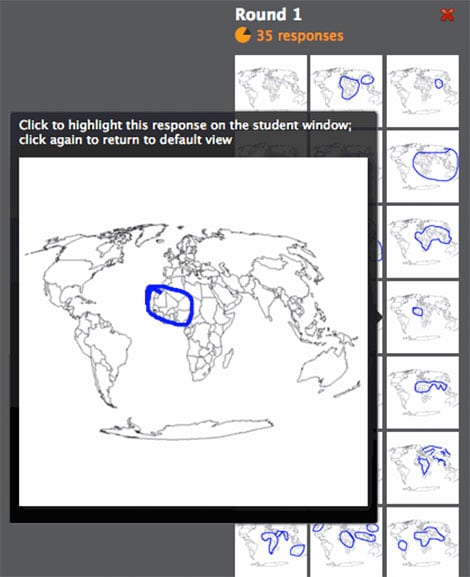A vehicle for including more voices in the conversation

Dan Perlman
Associate Provost of Innovation in Education and Professor of Biology, Brandeis University
I used Learning Catalytics with my Ecology class; I tend to give a series of very short mini-lectures throughout the class, built around slides, audio, and video from nature. Learning Catalytics fit in beautifully, both as a way to increase interaction and also a vehicle for including many more voices in the conversation simultaneously.
Learning Catalytics was a vehicle for making sure that all students became actively engaged, and gave me a much better sense of what students did and did not understand — in real time. In the question at right, I asked students to draw the present day range of elephants (and their close relatives) on a world map. In another question I asked them to draw the range of elephants (and their close relatives) from 20,000 years ago. By asking them to draw, they had to engage in really thinking about the question. After exploring their sketches together, I showed the actual range maps, and the differences really caught them by surprise! More importantly, it made them think about the distribution and abundance of organisms in a way that my telling and showing maps alone would not have.
Not only does Learning Catalytics get my students talking and contributing, but using Learning Catalytics I can "hear" what they are saying, vastly increasing the amount of conversation between students and teacher. When I ask a question, I'm hearing from most or all of the class, not just the usual suspects. It really changes the dynamic. And, by knowing the identities of individual students along with their answers, I can gently bring quieter students into the class-wide discussion ("So, Stephanie, what was your answer to this question? Why did you say that?")
